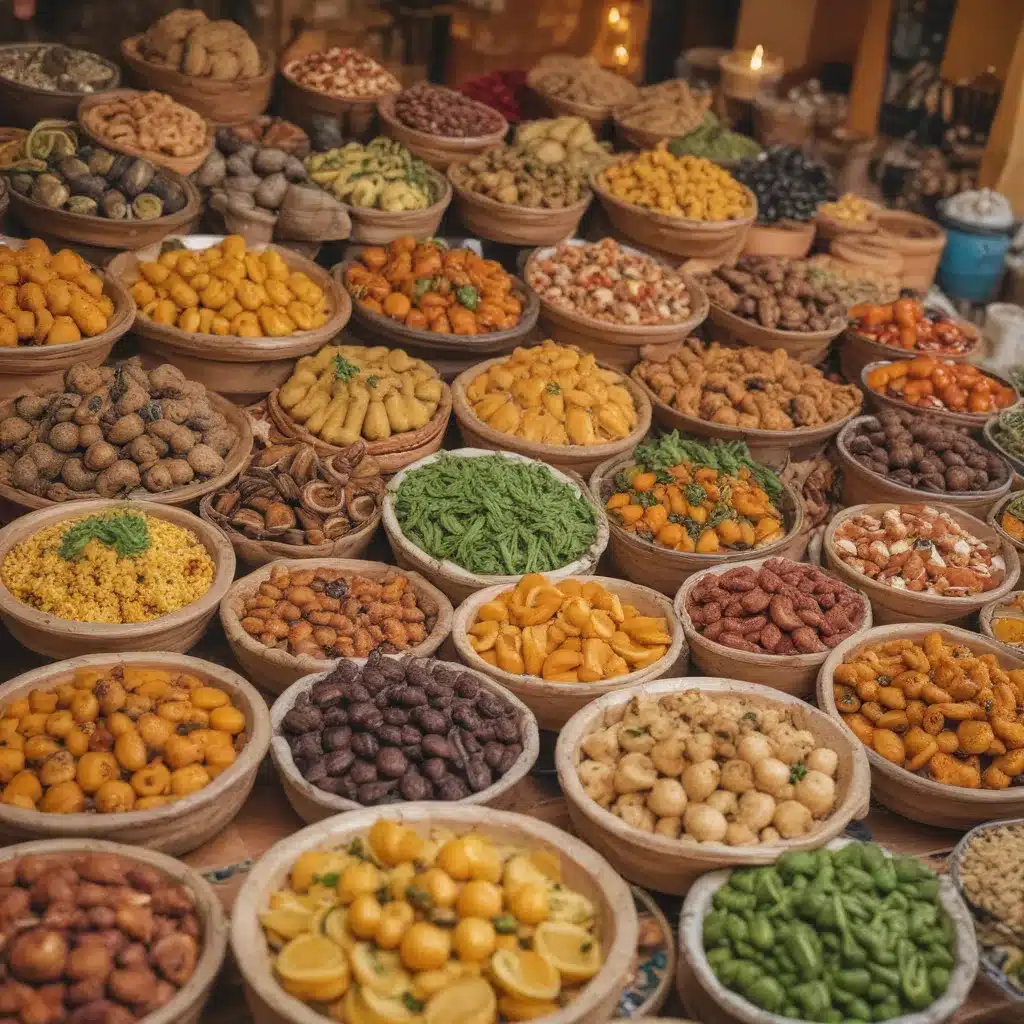
Unveiling the Captivating Culinary Tapestry of Morocco
Imagine yourself transported to a bustling Marrakech marketplace, where the air thrums with the rhythmic calls of vendors hawking their wares. The scent of exotic spices like saffron and turmeric dances on the breeze, and a symphony of colors explodes before your eyes – crimson pomegranates jostling for attention with vibrant green olives and plump, glistening dates under the desert sun. A gentle hand guides you towards a steaming cauldron, its fragrant contents bubbling with a promise of untold flavors. This, my friend, is your introduction to the captivating world of traditional Moroccan cuisine – a tapestry woven from history, culture, and an abundance of nature’s bounty.
Morocco’s culinary heritage stretches back centuries, a rich blend of Berber, Arab, and Andalusian influences. The Berber nomads, the indigenous people of Morocco, laid the foundation with their reliance on hearty stews, vegetables, and locally raised lamb and poultry. Think rfissa, a slow-cooked dish featuring shredded chicken or beef simmered with lentils, caramelized onions, and fragrant spices like ginger and turmeric. The dish reflects the Berber ingenuity of maximizing flavor with everyday ingredients.
The arrival of Arab traders in the 7th century marked a turning point, as they brought a flourish of spices – the aforementioned saffron, warming cumin, and fiery paprika – that transformed Moroccan dishes into aromatic masterpieces. Tagines, once primarily vegetable-based, began to incorporate tender cuts of lamb or chicken, infused with these exotic spices and dried fruits like apricots and prunes. The result? A symphony of textures and flavors that tantalize the taste buds.
A Culinary Mosaic: Andalusian Influence and Global Trade
Andalusian refugees fleeing Christian persecution in Spain during the 15th century further enriched Moroccan cuisine. They introduced new techniques like feuille de brick, thin pastry sheets used to create flaky and delicate pastries like pastilla. Citrus fruits like oranges and lemons also arrived, offering a refreshing counterpoint to the robust flavors of traditional dishes. The influence is particularly evident in chermoula, a vibrant green marinade or dipping sauce featuring cilantro, parsley, garlic, olive oil, and lemon juice.
The result of this fascinating historical fusion is a cuisine that is both dazzlingly complex and heartwarmingly familiar. Step into a traditional Moroccan home, and you’ll be greeted by the comforting aroma of a tagine simmering on a charcoal brazier. Tender lamb or chicken mingles with fragrant vegetables, plump prunes, and a hint of sweet honey, creating a symphony of textures and flavors that tantalize the taste buds.
But Moroccan cuisine extends far beyond tagines. Couscous, the national dish, is a light and fluffy semolina grain served with a dazzling array of toppings. Imagine a vibrant mound of couscous adorned with glistening caramelized onions, tender chicken or fish, roasted vegetables like sweet potatoes and carrots, and perhaps even a sprinkling of plump raisins for a touch of sweetness.
Pastries, Breads, and the Art of Hospitality
Pastilla, a flaky pastry filled with savory or sweet ingredients, offers a delightful contrast of textures. Imagine layers of crispy, melt-in-your-mouth pastry encasing tender chicken, sweet almonds, and a subtle hint of cinnamon. On the other hand, a vegetarian pastilla might be filled with caramelized onions, spiced chickpeas, and slivered almonds.
No Moroccan meal is complete without bread, freshly baked in a communal wood-fired oven known as a tannour. This warm, fluffy bread, often studded with sesame seeds, is used to scoop up every last morsel. It also plays a central role in Moroccan etiquette – a way to show respect and appreciation for the host and the food.
Food in Morocco transcends mere sustenance; it’s a social ritual, a celebration of life, and a way to connect with loved ones. Meals are communal affairs, often enjoyed family-style around a low table laden with an array of dishes. Sharing food is an act of hospitality, a way to express warmth and generosity. Guests are treated with the utmost respect, and a refusal of a second helping can sometimes be seen as an insult.
Moroccan cuisine is about more than just the food itself. It’s also about the rituals and traditions that surround it. Before a meal, a fragrant bowl of l’eau de fleur d’oranger (orange flower water) is passed around for guests to wash their hands. Mint tea, a symbol of Moroccan hospitality, is served throughout the meal and afterward as a gesture of welcome and appreciation.
Immersing in the Flavors and Rituals of Morocco
The sights, sounds, and aromas of Morocco beckon you on a sensory adventure. But the true heart of Moroccan culture lies not just in its vibrant landscapes and bustling souks, but also on the table. Moroccan cuisine is a tapestry woven from history, tradition, and an abundance of flavors waiting to be explored.
As you embark on your culinary adventure, remember that Moroccan cuisine is more than just delicious food. It’s a window into the soul of the country, reflecting its rich history, warm hospitality, and vibrant culture. Observe the importance of family gatherings, the significance of shared plates, and the welcoming gesture of a steaming cup of mint tea. Unveiling the flavors of Morocco isn’t just a treat for your palate; it’s a journey into the heart of the culture.
So, are you curious to embark on this delicious adventure? Let your Moroccan culinary exploration commence by visiting El Bahia, where we proudly share the vibrant flavors and rich traditions of Moroccan cuisine with discerning diners in New York City. Prepare to be swept away by the captivating aromas, vibrant colors, and harmonious blend of tastes that make Moroccan food a true gastronomic delight.


